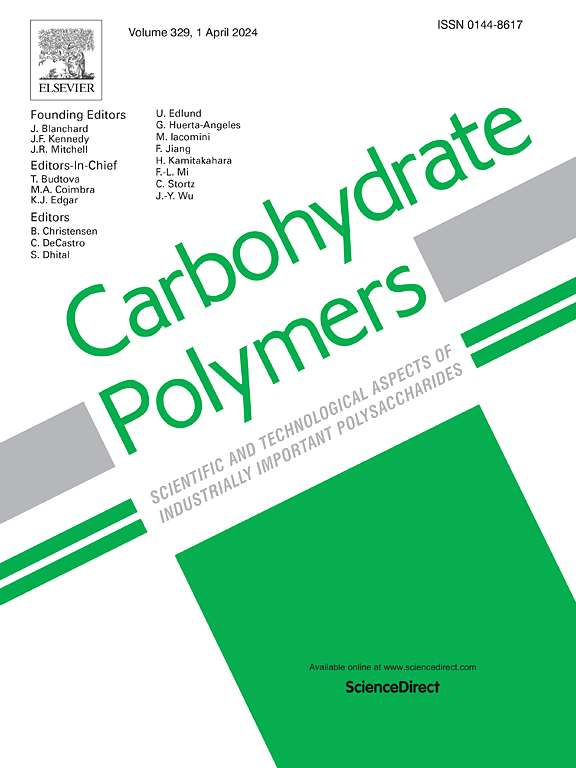Transformation of native starch into V-type granular starch through ethanol-aqueous heat treatment and its swelling behavior in cold water
IF 10.7
1区 化学
Q1 CHEMISTRY, APPLIED
引用次数: 0
Abstract
The poor hydrophilicity of raw starch limits its applications, resulting in increased processing complexity. Ethanol-induced V-type granular starch (EVGS), a type of cold-water swelling starch, can be prepared through ethanol-aqueous heat treatment (EAHT). Four types of native starch with three crystalline structures were used to prepare EVGS. At 70 % ethanol, the preparation process was divided into temperature gradients to explore the EVGS formation process. X-ray diffraction (XRD), DSC (Differential Scanning Calorimetry) and non-isothermal kinetics analysis revealed three stages in the formation process: destruction of the native crystalline structure, formation of composite crystalline structure, and complete formation of V-type crystalline structure. The observed “blocklets” structure of EVGS suggested that the crystalline structure transformation might be based on this structural unit. A water phase gradient dispersion method was used to monitor the cold-water swelling behavior of EVGS: as the dispersion time increased, short-chain amylose leached first, followed by long-chain amylose, accompanied by the enhanced hydrophilicity of amylopectin, the “blocklets” structure limited EVGS swelling extent and prevented complete granules rupture, contributing to its cold paste stability. Overall, this study further elucidated the formation process and the multi-scale structure of EVGS and proposed an interpretation of cold-water swelling process for EVGS.

求助全文
约1分钟内获得全文
求助全文
来源期刊

Carbohydrate Polymers
化学-高分子科学
CiteScore
22.40
自引率
8.00%
发文量
1286
审稿时长
47 days
期刊介绍:
Carbohydrate Polymers stands as a prominent journal in the glycoscience field, dedicated to exploring and harnessing the potential of polysaccharides with applications spanning bioenergy, bioplastics, biomaterials, biorefining, chemistry, drug delivery, food, health, nanotechnology, packaging, paper, pharmaceuticals, medicine, oil recovery, textiles, tissue engineering, wood, and various aspects of glycoscience.
The journal emphasizes the central role of well-characterized carbohydrate polymers, highlighting their significance as the primary focus rather than a peripheral topic. Each paper must prominently feature at least one named carbohydrate polymer, evident in both citation and title, with a commitment to innovative research that advances scientific knowledge.
 求助内容:
求助内容: 应助结果提醒方式:
应助结果提醒方式:


